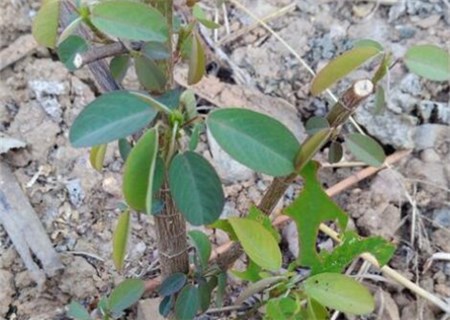Butterfly flower subfamily dance grass bonsai how to raise? What are the common diseases and insect pests and their control methods? How much is it per pot?
Dancing grass, a kind of dancing grass, dances like a butterfly fluttering its wings in the air, or a dancer with relaxed arms on the stage. So do you know how to raise dancing grass bonsai that can dance? What are the common diseases and insect pests and their control methods? How much is it per pot? In the Yunnan flower market, we have learned that the prices of different varieties of dance grass are also different. at present, the market is about 20-40 yuan per pot, different regions will also affect the price, so it is best to consult the flower market.

First, how to raise dancing grass bonsai
1. The soil of dancing grass bonsai
Dance grass likes loose, fertile, well-drained soil, which can be fertile sandy soil or humus soil, with rotten leaf mud as the best.
2. The lighting of dancing grass bonsai
Dance grass likes light, if the lack of light, the plant is easy to grow, become slender, thin and easy to lodge. Pay attention to increase the light, if the weather is not very good, you can often turn the flowerpot, so that all angles of the branches and leaves of the plant to receive sunlight, so that the dance grass can fully grow.
3. Watering and fertilization of dancing grass bonsai
In the budding period of dancing grass, it is necessary to keep the basin soil moist. After budding, the basin soil should be dry outside and wet inside. A little dry. The watering time is usually in the morning. If tap water is used when watering, it needs to be treated before watering. When watering, pay attention to less watering at the root of the plant, and it is best not to splash on the leaves and stems.
Dance grass has less demand for fertilizer, and the frequency of fertilization is not much. Fertilizer is generally needed in the growing period, and fertilization is also needed in order to replenish nutrients during the flowering period.
4. prevention of diseases and insect pests of dancing grass bonsai
Dancing grass is vulnerable to powdery mildew, charcoal maggot, leaf spot, root rot and other diseases. when diseases occur, the diseased branches should be cut off and destroyed. In addition, dancing grass is also vulnerable to the threat of ground tigers, powder, thrips, mites and other insect pests, which need to be controlled in time.
Common diseases and insect pests of dancing grass and their control methods
The pest of dancing grass:
Insect pest
Dance grass pests are less, the main pests are ground tiger, powder medium, thrips, mites, armyworm and so on.
Prevention and cure method
In the usual maintenance process, pay more attention to observe the growth of dancing grass, artificial pest control, chemical control and so on. Once the disease occurs, you can choose the corresponding drugs for prevention and treatment.
Diseases of dancing grass:
Common diseases
Although there are few insect pests in dancing grass, there are more diseases. The main diseases of dancing grass are root rot, powdery mildew, anthracnose, leaf spot and blight.
Prevention and cure method
The diseased leaves should be destroyed in time to avoid the spread of the disease. Use appropriate chemicals if necessary. For example, spraying 50% carbendazim wettable powder 500 times, or topiramate wettable powder 500 times, it can be sprayed once in 10-14 days, and can be cured after about 3 times.
In addition, the use of Bordeaux solution or bacillus and Bordeaux solution alternately sprayed for 4 times had a better therapeutic effect on leaf spot. Dysen zinc 500 times solution is beneficial to prevent epidemic disease. In addition, as continuous cropping for many years will promote the spread of the disease, it is best to change the stubble every 4-5 years.
Time: 2019-03-16 Click:
- Prev

Why does dancing grass (also known as lover grass) move? How to maintain it? What's the use?
Dance grass, very sensitive to sound waves, will continuously swing up and down when stimulated by sound waves, like a butterfly dancing its wings in flight, or a girl with relaxed arms on the stage, hence its name. So do you know why the dancing grass moves? How to maintain it? What's the use? Why does the dancing grass move?
- Next

Saline alkaline plant African wheatgrass breeding methods and precautions? How to plant seeds? What's the value?
African wheatgrass, also known as ice vegetables, ice leaves in the flower, then African wheatgrass breeding methods and precautions? How to plant seeds? What's the value? According to information, African wheatgrass is a salt-alkaline plant. Its cells contain salt, so it has some salty taste when eaten.
Related
- Fuxing push coffee new agricultural production and marketing class: lack of small-scale processing plants
- Jujube rice field leisure farm deep ploughing Yilan for five years to create a space for organic food and play
- Nongyu Farm-A trial of organic papaya for brave women with advanced technology
- Four points for attention in the prevention and control of diseases and insect pests of edible fungi
- How to add nutrient solution to Edible Fungi
- Is there any good way to control edible fungus mites?
- Open Inoculation Technology of Edible Fungi
- Is there any clever way to use fertilizer for edible fungus in winter?
- What agents are used to kill the pathogens of edible fungi in the mushroom shed?
- Rapid drying of Edible Fungi

